The month of November is filled with memorials and celebrations, from acknowledging the contributions of first Americans to our country…to remembering the service and sacrifices of members of the U.S. military…to giving thanks for the bounty of our nation.
November is National Hospice and Palliative Care Month, a time to honor and celebrate physicians, nurses, certified nursing assistants, social workers, pastoral counselors, and volunteers who provide invaluable care and support to those most in need. In 1978, President Jimmy Carter announced the month-long observance to recognize those who provide end-of-life care. The new event was also meant to raise awareness of the fledgling hospice movement. Today, this special month also provides an opportunity to educate families and communities about the benefits of hospice and palliative care. This year’s theme, “Meeting You Where You Are,” highlights the expanded programs established by hospices to meet the needs of their local population. At Capital Caring Health, we work to raise public awareness every day, especially for communities of color, the LGBTQ community, and other marginalized communities who use advanced illness care services at a substantially lower rate. Learn more about the history of the hospice movement by reading about the international founder’s story here, about Capital Caring Health’s role in founding the national movement here, and why this observation is important here.
November is Native American Heritage Month, a time to recognize the rich, diverse cultures and traditions of the original Americans and acknowledge their contributions, past and present, to the nation. Their thousands of years of history helps us understand the country’s early days, including inhumane policies of assimilation and termination. Despite such treatment, American Indian and Alaska Natives have persevered. The very first celebration, American Indian Day, began more than a century ago when New York state honored their role in 1916. That original occasion was expanded to a national week of recognition in 1986 and then to a full month in 1990, as proclaimed by every President since 1994. You can learn more about Native American history by joining online events with indigenous actors and playwrights, streaming films from the Native Cinema Showcase, and more here. To explore modern indigenous art, honor code talkers, and find other ideas to celebrate, click here.
Día de los Muertos or Day of the Dead is celebrated on November 1st and 2nd and known primarily as a Mexican holiday. Despite costumes and parades, however, Day of the Dead is not to be confused with Halloween. Rather, the joyous festival blends ritual, culture, and religion from predominantly Catholic Spain and pre-Columbian Aztecs and other ancient indigenous peoples. It is believed that on November 1 and 2, the souls of the departed awaken and return to the living world where they meet their loved ones to feast, drink, dance, and play music. That’s why food, water, and other offerings are left on gravesites or on altars or “ofrendas” in the home. Originating in Mexico’s rural areas, the observance migrated to big cities during the 1980s. The holiday is now celebrated throughout the U.S., due to the pop culture portrayal of Día de los Muertos and the more than 36 million U.S. residents of Mexican heritage. Learn more about the history here, about public altars and more from the Museum of Mexico, and how to make your own altar here.
Veterans Day is observed every November 11 on the anniversary of the document that ceased fighting near the end of World War I. Originally known as Armistice Day, the holiday honored those who served during The Great War with parades and a moment of silence at 11:00 a.m., the time of the actual signing in 1918. In 1954, Congress expanded the observance to include U.S. veterans of all wars. The official date moved around and finally reverted to November 11 in 1978 under a law signed by President Gerald Ford. The theme of this year’s observance, “Honor,” reflects the pride of those in military service defending the country and their tradition of answering the call to duty. Consider Veterans Day as a time set aside to thank and honor all those who served during war or peacetime. Learn more about the history of Veterans Day by clicking here, or explore different ways you can honor Veterans here.
November 16th is the International Day for Tolerance, established by United Nations Educational, Scientific and Cultural Organization (UNESCO) in 1996. The Declaration of Principles states, “Tolerance is respect, acceptance, and appreciation of the rich diversity of our world’s cultures, our forms of expression and ways of being human.” However, while societies are more diverse than ever, intolerance is growing in many places and is often central to conflicts including the rise of violent extremism, major human rights violations, and anti-refugee sentiment. UNESCO further notes that promoting tolerance is about action and requires investment, nurturing, and respect for differences through education, inclusion, and opportunities. Recommendations for acknowledging this day include reading about different cultures, starting a conversation with someone with a differing viewpoint, or participating in advocacy. To learn more about the history of the observance and what UNESCO does for tolerance, click here.
Americans celebrate Thanksgiving this year on November 24, the last Thursday in November. Historical accounts vary on when and where the first Thanksgiving took place, and who was there. However, one of the first known celebrations was a 1621 autumn harvest feast shared by the Plymouth colonists of current-day Massachusetts and the Wampanoag, local indigenous people. Colonies and states began their own celebrations over two centuries ago. Then during the height of the Civil War, President Abraham Lincoln declared Thanksgiving a national holiday in 1863 to be celebrated each November.
Traditions include eating foods native to the Americas—including turkey, sweet potatoes, cranberries, and squash (think pumpkin pie)—watching football and the Macy’s Thanksgiving Day parade. For many, it is also a day to volunteer by serving a meal to those in need or conducting food drives. Conversely, many Native Americans treat Thanksgiving as a day of mourning and protest, as it commemorates the arrival of settlers in North America followed by hundreds of years of oppression and genocide. Learn more about the history of Thanksgiving here and how the menu has evolved over time here.


 Dr. Cheryl-Lynne McCalla, DO
Dr. Cheryl-Lynne McCalla, DO Kathleen Ramkaran, RN, CCM
Kathleen Ramkaran, RN, CCM Hali Gantumur
Hali Gantumur Yasmin
Yasmin  Jennifer Olsen GNP-BC
Jennifer Olsen GNP-BC Meena Raj, MD,
Meena Raj, MD, 

 Kimberly Grove
Kimberly Grove
 Pat Bishop
Pat Bishop Elizabeth Ariemma
Elizabeth Ariemma Ray Jay Garcia, M.D.
Ray Jay Garcia, M.D.
 Heidi Young
Heidi Young Matt Kestenbaum
Matt Kestenbaum
 Anne Silao-Solomon, M.D.
Anne Silao-Solomon, M.D. Matthew Irwin, M.D., M.S.W.
Matthew Irwin, M.D., M.S.W. Catherine McGrady, RN, MSN, is Vice President, Clinical Programs at Capital Caring Health. In this role she is responsible for the development, implementation, and monitoring of clinical programs in support of high-quality patient-centered care delivery across the continuum of services. Catherine also manages external partnerships including Capital Caring Health’s participation in ACOs and other value-based clinical programs
Catherine McGrady, RN, MSN, is Vice President, Clinical Programs at Capital Caring Health. In this role she is responsible for the development, implementation, and monitoring of clinical programs in support of high-quality patient-centered care delivery across the continuum of services. Catherine also manages external partnerships including Capital Caring Health’s participation in ACOs and other value-based clinical programs Jason Sobel, MD
Jason Sobel, MD Kremena Bikov
Kremena Bikov Stacy Brown
Stacy Brown Jackie Gouline
Jackie Gouline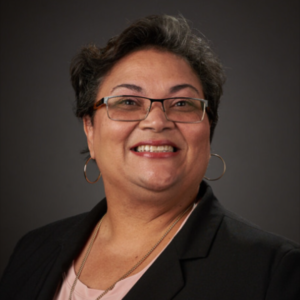 Susan Roberts
Susan Roberts Brenan Nierman
Brenan Nierman Annette Lindsay
Annette Lindsay Shannon Collier
Shannon Collier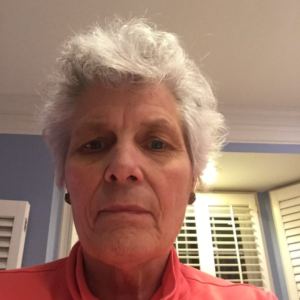 Carla Thompson
Carla Thompson Gabby True
Gabby True Evan Kirschner
Evan Kirschner Margaret Doherty
Margaret Doherty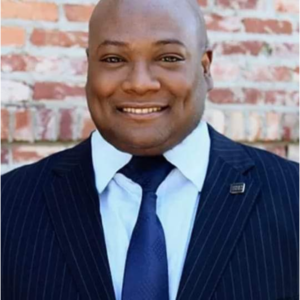 Henry Fuller
Henry Fuller Jennifer Godwin
Jennifer Godwin Sally Hughes
Sally Hughes LaWanda Middleton
LaWanda Middleton Hope Collazo
Hope Collazo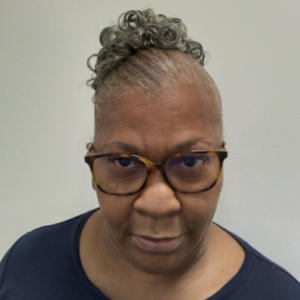 Odessa Simpson
Odessa Simpson Anne Young
Anne Young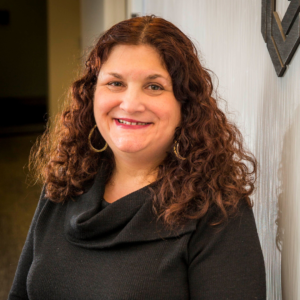 Sherri Parker
Sherri Parker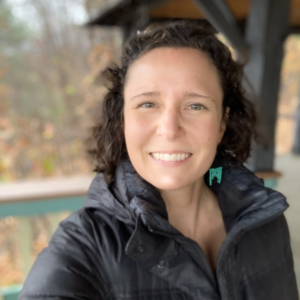 Catherine Kravolec
Catherine Kravolec Heidi Young, M.D.
Heidi Young, M.D.
 Hank Willner, M.D.
Hank Willner, M.D. Audrey Easaw
Audrey Easaw Julia Feldman
Julia Feldman Gus has been a part of the Capital Caring Health family for nearly fifteen years. Ten of those years have been in leadership, working with colleagues and co-workers to achieve the best in their ability while promoting CCH core values. Gus has a background in nursing and a lifelong passion for technology. In each position at CCH, Gus has found ways to integrate technology to enhance outcomes and job satisfaction.
Gus has been a part of the Capital Caring Health family for nearly fifteen years. Ten of those years have been in leadership, working with colleagues and co-workers to achieve the best in their ability while promoting CCH core values. Gus has a background in nursing and a lifelong passion for technology. In each position at CCH, Gus has found ways to integrate technology to enhance outcomes and job satisfaction.
 Linda Biedrzycki
Linda Biedrzycki Joe Murray
Joe Murray Lin Maurano
Lin Maurano Laura Branker
Laura Branker Cameron Muir, M.D.
Cameron Muir, M.D. Cameron Muir, M.D.
Cameron Muir, M.D. Fellowship
Fellowship Lee-Anne West, M.D.
Lee-Anne West, M.D.
 Steve Cone
Steve Cone

 Kieran Shah
Kieran Shah Altonia Garrett
Altonia Garrett Jason Parsons
Jason Parsons Nancy Cook
Nancy Cook Michael Byas-Smith, M.D.
Michael Byas-Smith, M.D. Olubukola Bolaji, M.D.
Olubukola Bolaji, M.D. Jennifer Gerhard, D.O.
Jennifer Gerhard, D.O. Hershell Foster
Hershell Foster Michael Toohig’s Story
Michael Toohig’s Story Liberating Europe
Liberating Europe Marrygold Ugorji’s Story
Marrygold Ugorji’s Story Sherri Parker, Team Leader Medical Social Worker
Sherri Parker, Team Leader Medical Social Worker Colleen Carberry, RN Case Manager
Colleen Carberry, RN Case Manager Paulette Davidson, Chaplain
Paulette Davidson, Chaplain Donna Smith
Donna Smith Tabitha Gingerich, NP
Tabitha Gingerich, NP Dwayne Barton, NP
Dwayne Barton, NP Caitlin Geary
Caitlin Geary Sayaka Hanada
Sayaka Hanada Sherri Parker
Sherri Parker
 Mandy Brouillard
Mandy Brouillard Tamara Barnes, M.D.
Tamara Barnes, M.D. Alan Goldblatt, M.D.
Alan Goldblatt, M.D. Amanda Keerbs, M.D.
Amanda Keerbs, M.D. Adam Knudson, M.D.
Adam Knudson, M.D. Peyman Mamdouhi, D.O.
Peyman Mamdouhi, D.O. John McCue, D.O.
John McCue, D.O. Christopher Pile, M.D.
Christopher Pile, M.D. Maleeha Ruhi, M.D.
Maleeha Ruhi, M.D. Mohammad Saleem, M.D.
Mohammad Saleem, M.D. Jason Sobel, M.D.
Jason Sobel, M.D. Carolyn Richar
Carolyn Richar Susan Boris
Susan Boris Keith Everett
Keith Everett Vivian Hsia-Davis
Vivian Hsia-Davis David Schwind
David Schwind Eric De Jonge, M.D.
Eric De Jonge, M.D. Melissa McClean, N.P.
Melissa McClean, N.P. Shaz Anwar, D.O.
Shaz Anwar, D.O. Petros
Petros  Neil Parker’s Story
Neil Parker’s Story Sulaiman Bangura’s Story
Sulaiman Bangura’s Story Steven Skobel’s Story
Steven Skobel’s Story